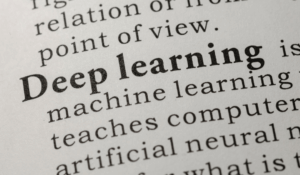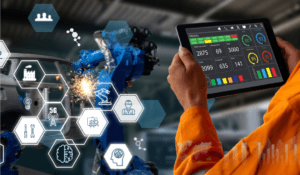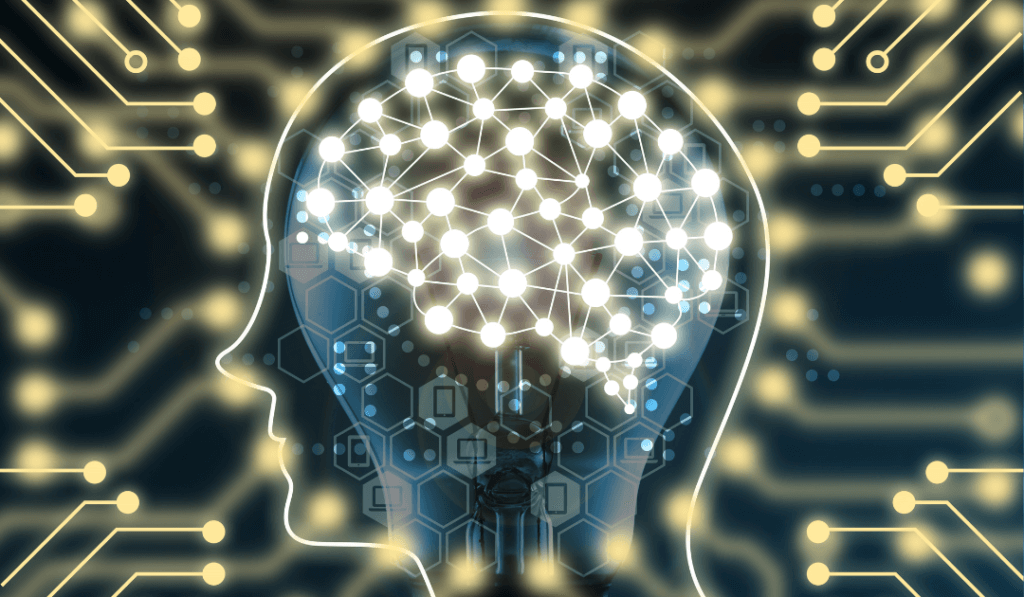What is DEEP Learning?
DEEP Learning, also known as Deep Neural Networks or Deep Learning Networks, is a subset of artificial intelligence (AI) that focuses on training neural networks to learn from data and perform complex tasks. These neural networks consist of layers of computational units called neurons, which are connected and work together to process information.
The term “deep” in DEEP Learning refers to these networks having multiple hidden layers, allowing them to learn and extract more complex features from data compared to traditional machine learning algorithms.

What are the three types of deep learning?
Deep learning encompasses a variety of models, the most notable of which are Convolutional Neural Networks (CNNs), Recurrent Neural Networks (RNNs), and Deep Belief Networks (DBNs).
Convolutional Neural Networks (CNNs)
CNNs are primarily used for image processing, video recognition, and natural language processing. They are designed to automatically and adaptively learn spatial hierarchies of features directly from data, which makes them highly efficient for computer vision tasks.
Recurrent Neural Networks (RNNs)
RNNs are designed to recognize patterns in sequences of data, such as text, genomes, handwriting, or the spoken word. Unlike traditional neural networks, RNNs remember their input, making them unique and powerful tools in modeling sequence data.
Deep Belief Networks (DBNs)
DBNs are generative graphical models which learn to extract a deep hierarchical representation of the training data. They consist of multiple layers of hidden units, making them effective in recognizing, clustering, and generating images, video sequences, and motion-capture data.
Applications of DEEP Learning

DEEP Learning has a wide range of applications in various industries, including:
Computer Vision
Computer vision is the field of AI that focuses on teaching machines to see and interpret visual data. DEEP Learning has significantly improved the accuracy and efficiency of computer vision tasks such as object detection, recognition, and segmentation.
Natural Language Processing (NLP)
NLP is a branch of AI that deals with teaching machines to understand and generate human language. With DEEP Learning, NLP models can process large amounts of text data, extract meaning, and generate human-like responses.
Speech Recognition
Speech recognition is the ability of machines to understand and transcribe human speech. DEEP Learning has made significant advancements in this field, making it possible for virtual assistants like Siri and Alexa to understand and respond to human voice commands accurately.
Healthcare
DEEP Learning has also found applications in healthcare, from medical image analysis to drug discovery. It can help in early detection and diagnosis of diseases, making healthcare more efficient and accurate.
Limitations of DEEP Learning
Although DEEP Learning has shown tremendous success in various tasks, it also has some limitations. These include:
- Data Dependency: DEEP Learning models require a large amount of data to be trained effectively. Without sufficient data, the models may not perform well.
- Lack of Interpretability: The inner workings of DEEP Learning models are complex, making it challenging to understand how they arrive at a decision.
- Computationally Expensive: Training and running DEEP Learning models can be computationally expensive, requiring powerful hardware and computing resources.
WHAT ARE NEURAL NETWORKS AND DEEP LEARNING?
Neural networks are the building blocks of DEEP Learning. These are mathematical models inspired by the structure and functioning of the human brain. They consist of interconnected layers of neurons that communicate with each other to process input data and produce an output.
DEEP Learning uses a type of neural network called deep neural networks (DNNs), which have multiple hidden layers between the input and output layers. These hidden layers allow the network to learn and extract more complex features from data, making DEEP Learning models highly accurate.
Where is deep learning used?
Deep learning finds its application in a host of fields, including but not limited to:
Autonomous Vehicles
Deep learning powers the computational vision models that enable autonomous vehicles to recognize objects, interpret signals, and make navigational decisions.
Entertainment
In the entertainment industry, deep learning is used in recommendation systems of streaming platforms to tailor content to user preferences.
Financial Sector
The financial sector leverages deep learning for credit scoring, algorithmic trading, and fraud detection.
Agriculture
In agriculture, deep learning aids in crop and soil health monitoring, pest detection, and yield prediction.
Retail
And finally, in retail, deep learning optimizes inventory management, enhances customer experience, and personalizes marketing efforts.
In all these applications, deep learning models analyze vast amounts of data, extract meaningful insights, and make accurate predictions, driving efficiency and innovation. As technology continues to advance, the applications of deep learning are only set to increase, making it a crucial aspect of AI and its future advancements. So, DEEP Learning is an essential tool for various industries and has the potential to revolutionize how we use and interact with machines in our daily lives.
How is deep learning useful?
Benefits of Deep Learning:
- Automatic and adaptive learning from vast amounts of data
- Eliminates the need for manual feature extraction
- Highly efficient and accurate
- Outperforms humans in image recognition
- Drives the development of autonomous vehicles
- Transforms the healthcare sector
- Enhances prediction of stock market trends, credit scoring, and fraud detection
- Provides actionable insights from customer data for businesses
- Improves natural language processing and speech recognition systems
- A transformational technology shaping various industries and society at large.
Machine Learning vs Deep Learning
- Machine Learning (ML) and Deep Learning (DL) are subsets of Artificial Intelligence (AI).
- ML enables computers to learn from data and make decisions or predictions based on that data.
- DL is a subfield of ML that uses neural networks with many layers to simulate the behavior of the human brain.
- ML requires manual feature extraction, while DL automatically extracts features from data.
- DL can process vast amounts of data and handle complex computations.
- Deep Learning represents the forefront of AI technology and holds immense potential for solving intricate problems.
- Having a fundamental understanding of ML is crucial to comprehending the inner workings of DL models.
- DL will lead the way in groundbreaking technological breakthroughs in the future.
Deep Learning Algorithms

Deep Learning Algorithms are a subset of Machine Learning algorithms that are based on artificial neural networks, particularly deep neural networks. There are several types of deep learning algorithms, each designed to address different types of problems. Here are some of the most popular Deep Learning algorithms:
- Convolutional Neural Networks (CNNs): These are primarily used for image and video processing tasks. CNNs are designed to process pixel data and can preserve the spatial relationship between pixels by learning image features directly from small squares of input data.
- Recurrent Neural Networks (RNNs): These are designed for sequential data tasks because they can remember their input. This makes them useful for processing sequences of data, whether it’s time series, text, speech, or even a sequence of images.
- Long Short-Term Memory Networks (LSTMs): This is a type of RNN that can learn and remember over long sequences, making them particularly useful for natural language processing and machine translation.
- Generative Adversarial Networks (GANs): GANs consist of two parts – a generator and a discriminator. The generator creates new data instances, while the discriminator evaluates them for authenticity. GANs have been used to generate astonishingly realistic synthetic images, music, voice, and even 3D models of objects and environments.
- Autoencoders: Autoencoders are used for unsupervised learning of efficient codings. They are typically used for anomaly detection, denoising, and dimensionality reduction.
- Radial Basis Function Networks (RBFNs): RBFNs are used for regression and classification tasks. They differ from other neural networks because of their unique activation function; the output of the function is based on the distance from the center of the neuron in the input space.
Deep learning algorithms are designed to learn and improve on their own by consuming vast amounts of data. They’ve been behind some of the most significant advancements in technology, including self-driving cars, voice assistants, and real-time translation. As deep learning continues to evolve, it’s likely that we’ll see more innovative and groundbreaking applications emerge. The potential for solving complex problems and making our lives easier is immense, making deep learning one of the most exciting fields in technology today. So, if you’re interested in becoming a part of this cutting-edge technology, start exploring the world of Deep Learning now!
How powerful is deep learning?
Deep learning is an extraordinary force in the realm of artificial intelligence, with capabilities that transcend traditional machine learning models. It possesses the power to process unstructured data, unravel complex patterns, and decipher intricate structures like human speech, images, and genetic sequences.
What truly sets deep learning apart is its ability to autonomously learn feature hierarchies, eliminating the need for hand-crafted features and enabling it to solve increasingly complex problems. The magnitude of its potential is amplified by its capacity to harness vast volumes of data and continuously adapt, often surpassing human-level performance.
From fueling advanced speech recognition and real-time translation services to driving autonomous vehicles, deep learning is redefining the boundaries of technological achievement. It’s even revolutionizing healthcare, enhancing diagnostics, and enabling personalized medicine.
The possibilities with deep learning are virtually boundless, making it an awe-inspiring tool and a true game-changer in the field of AI. As it continues to evolve, we can only begin to imagine the groundbreaking advancements that will come from harnessing its full potential. So, if you’re ready to be a pioneer in shaping the future of technology and society, dive into the world of deep learning now!
Is Deep learning better?
While it’s tempting to categorically state that deep learning is superior, the reality is more nuanced. Deep learning indeed has the edge in handling large volumes of unstructured data and excels in tasks such as image and speech recognition, which require identifying complex patterns. Its self-learning capabilities eliminate the need for manual feature extraction, making it a powerful tool for tackling intricate problems. However, deep learning models also require substantial computational resources and significant amounts of data to perform optimally.
In contrast, traditional machine learning algorithms can be more efficient and easier to interpret in scenarios involving smaller datasets or less complex tasks. Therefore, whether deep learning is ‘better’ largely depends on the specific requirements of the task at hand
Future of DEEP Learning
Despite its limitations, DEEP Learning continues to grow and evolve. Some potential future developments in this field include:
- Incorporating human-like reasoning and causal understanding into DEEP Learning models.
- Development of more efficient and interpretable DEEP Learning architectures.
- Integration with other branches of AI, such as reinforcement learning, to create even more powerful AI systems.
In conclusion, DEEP Learning has revolutionized the field of AI and has become an essential tool for solving complex tasks across industries. With continuous advancements and innovations, we can expect to see even more impressive applications of DEEP Learning in the future. So, it is important for anyone interested in AI to have a understanding of DEEP Learning concepts and techniques. Keep learning and stay updated on the latest developments in this exciting field!
CONCLUSION
In essence, DEEP Learning has revolutionized artificial intelligence. It tackles complex tasks like image recognition, natural language processing, and fraud detection, once considered exclusive to human intelligence. The intersection of DEEP Learning with other AI technologies promises even more powerful and accessible systems. For AI enthusiasts, staying informed and nurturing a thorough understanding of DEEP Learning is crucial. Its future is as deep and expansive as the neural networks it relies upon.
FREQUENTLY ASKED QUESTIONS:
1. What is deep learning?
Deep learning is a type of AI that uses layers of interconnected nodes to learn from data, like the human brain. It’s used for image recognition, speech translation, and more!
2. How does it work?
Deep learning models analyze massive amounts of data and identify patterns. The more data they have, the better they perform. It’s like showing a baby thousands of pictures of dogs until they can recognize one on their own.
3. What are the different types?
There are many, but some popular ones are convolutional neural networks (CNNs) for images, recurrent neural networks (RNNs) for text, and generative adversarial networks (GANs) for creating new things like images or music.
4. What are some applications?
Self-driving cars use deep learning to see and understand their surroundings. It’s also used in facial recognition, medical diagnosis, and even composing music!
5. What are the benefits?
Deep learning models are super accurate, can handle massive amounts of data, and are versatile. They’re like super-powered learning machines!
6. What are the limitations?
They need a lot of data to train, can be hard to understand how they work, and require powerful computers. Think of it as a picky eater who needs a big meal and a fancy kitchen.
7. What’s the future of deep learning?
Researchers are making them more efficient and easier to understand. They’ll be used for even more complex tasks, like understanding emotions and making decisions. It’s like giving them superpowers!
8. How can I learn more?
There are online courses, books, blogs, and even YouTube channels dedicated to deep learning! It’s like having a library full of deep learning knowledge at your fingertips.
9. Is deep learning right for me?
If you’re curious about AI and want to learn a powerful tool, deep learning is for you! But be aware of the challenges, like needing a lot of data and a strong computer. Think of it as an adventure with some hurdles to jump over.
10. Where can I find a deep learning job?
Tech companies, research institutions, and even startups are all looking for deep learning talent! With your skills, you could be working on the future of AI. It’s like having a passport to exciting career opportunities.




